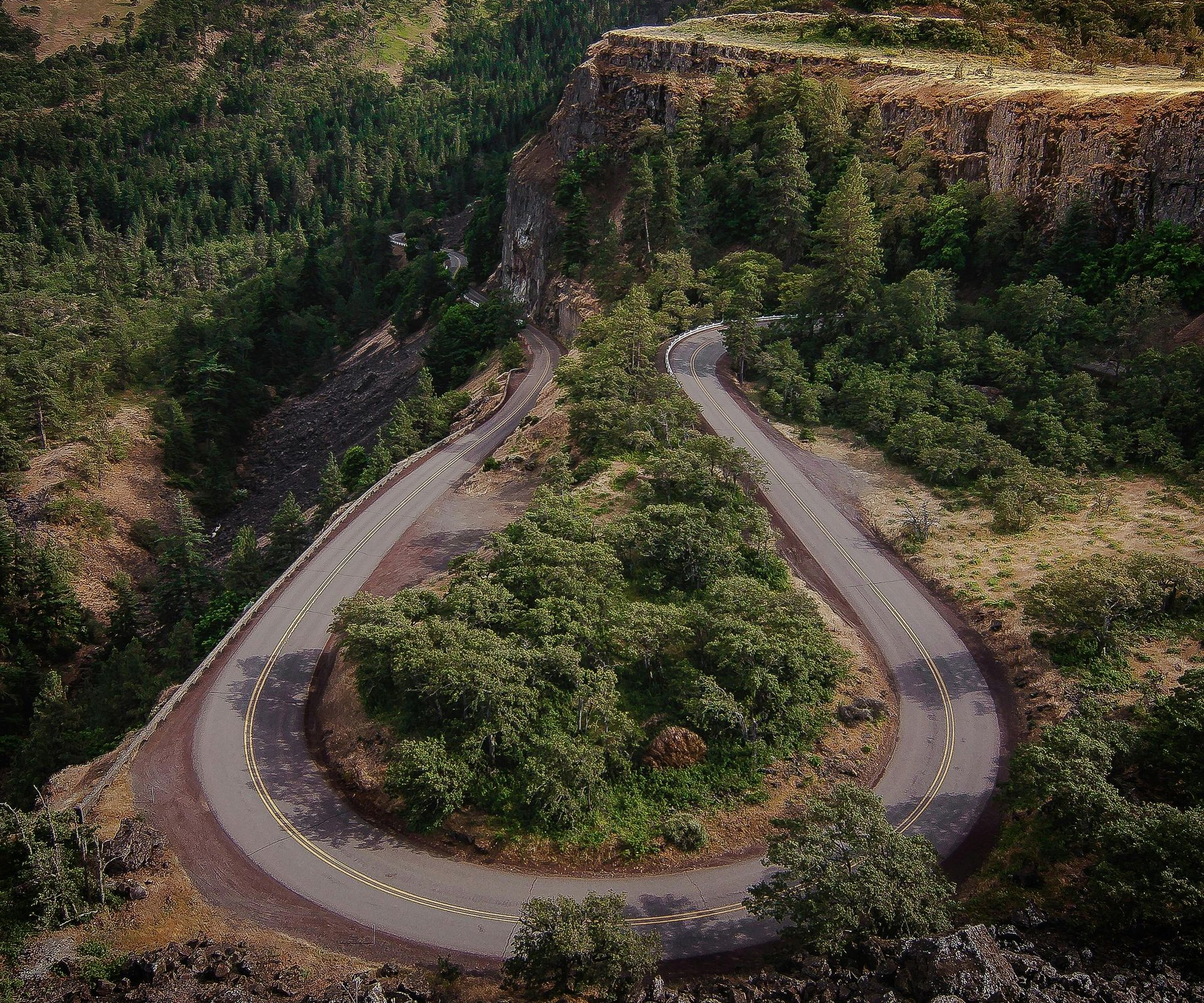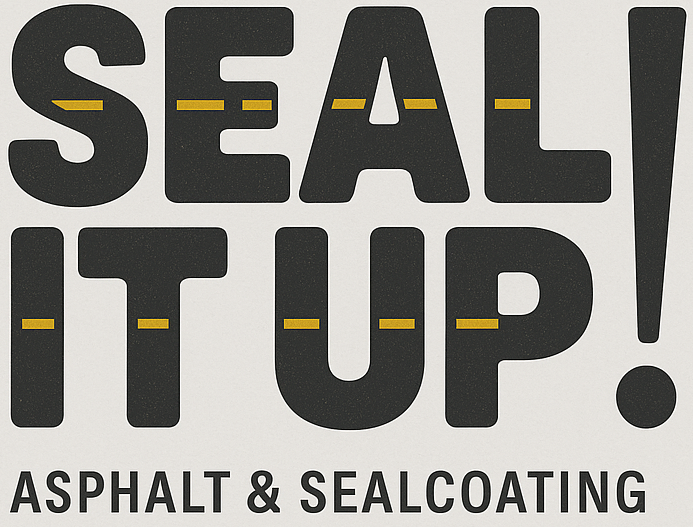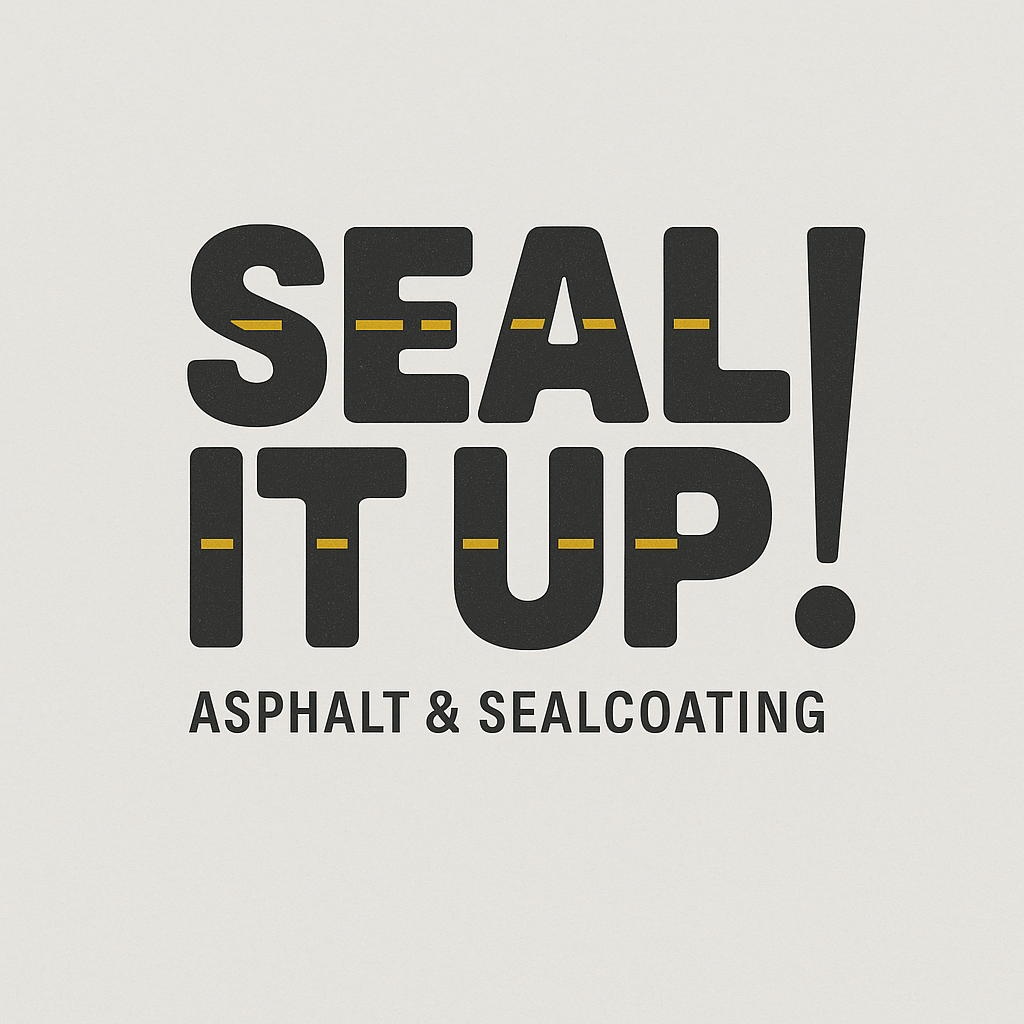Sealcoating vs. Repaving: Beating Moisture and Freeze-Thaw on a Budget
Driveways in wet, four-season climates fight a different enemy: water. Rain and snowmelt seep into tiny openings, then winter arrives. Freeze-thaw cycles expand that trapped water, prying the surface apart. If you’ve noticed cracking, potholes, or pooling, you’re likely weighing sealcoating against repaving. Here’s how to spend wisely when moisture is the main threat.

Why Water Is Asphalt’s #1 Enemy
Asphalt is porous. Without protection, water infiltrates micro-cracks and joints. Over time, that causes:
- Stripping: Water weakens the bond between asphalt binder and aggregate.
- Crack growth: Small openings widen as water works under the surface.
Base softening: Persistent moisture undermines the supportive layers beneath the pavement.
Freeze-Thaw Damage, Explained
When temperatures drop, water in cracks freezes and expands. That expansion acts like a wedge, turning hairline cracks into wide gaps. Repeated cycles lead to:
- Potholes: Broken chunks where the surface and base have been displaced.
- Edge cracking: Damage along sides where water and snow accumulate.
Heaving and settlement: Uneven spots that hold more water, speeding up the cycle.
How Sealcoating Saves Money in Wet Climates
Sealcoating is your moisture manager—a protective film that blocks water before it can enter.
Locks Out Water and Snowmelt
A properly applied sealcoat reduces permeability, keeping rain and meltwater on the surface where it drains away instead of soaking in.
Pairs With Professional Crack Sealing
Before sealcoating, a pro will fill active cracks with hot rubberized material. This flexible seal moves with the pavement, preventing water from sneaking back in.
Buys Time for the Base
By limiting infiltration, you stabilize the layers beneath the asphalt. That means fewer potholes and less structural damage over time—delaying the need for repaving.
When Repaving Is the Better Investment
Sealcoating can’t reverse structural failure. Choose repaving if you see:
- Widespread potholes or “pumping” fines: Water has reached and disturbed the base.
- Large, connected cracks and crumbling edges: The surface has lost strength.
- Chronic drainage problems: Standing water after storms means the profile or base needs correction.
In these cases, a mill-and-overlay or full-depth replacement restores structure and fixes drainage so the new surface lasts.
Maintenance vs. Replacement: A Practical Plan
- Every year: Inspect and fill new cracks before winter. Clear debris so drains and edges shed water.
- Every 2–3 years: Sealcoat with a high-quality, professionally applied product suited for wet/freeze-thaw conditions.
As needed: Patch isolated potholes to stop water from reaching the base.
This schedule spreads small costs over time and dramatically reduces the odds of a sudden, expensive repave.
DIY or Professional?
Moisture control is all about details.
- Surface prep matters. Professional cleaning removes dirt and algae that block adhesion.
- Right materials, right temps. Pros use commercial-grade sealers and crack sealants applied in weather windows that ensure proper cure.
Even coverage. Squeegee/spray techniques produce a consistent film that actually resists water.
Quick Decision Guide for Wet/Freeze-Thaw Areas
- Light wear, fine cracks, faded color? →
Crack seal + sealcoating.
- A few small potholes, good drainage overall? →
Patch + crack seal + sealcoating; monitor yearly.
Multiple potholes, soft spots, standing water after storms? → Plan a resurfacing/repave; improve drainage; then protect with regular sealcoating going forward.
Quick Decision Guide for Wet/Freeze-Thaw Areas
- Light wear, fine cracks, faded color? →
Crack seal + sealcoating.
- A few small potholes, good drainage overall? →
Patch + crack seal + sealcoating; monitor yearly.
Multiple potholes, soft spots, standing water after storms? → Plan a resurfacing/repave; improve drainage; then protect with regular sealcoating going forward.
Bottom Line
In wet, freeze-thaw climates, sealcoating—paired with proactive crack repair—delivers the best long-term savings for most homeowners. Repaving should be reserved for surfaces with structural damage or drainage issues that maintenance can’t fix.
Stop Water Before Winter
Get ahead of the next rainy season and cold snap. Book a professional inspection and sealcoating with
Seal It Up! We’ll seal cracks, apply a moisture-blocking coat, and set up a maintenance schedule that keeps repaving off your to-do list—and out of your budget.

